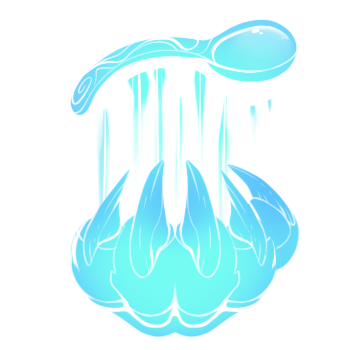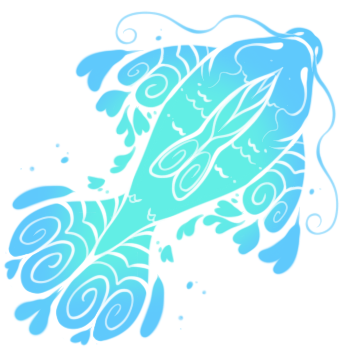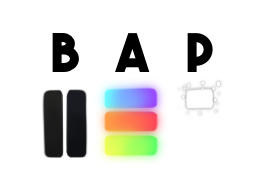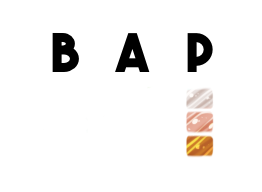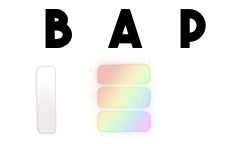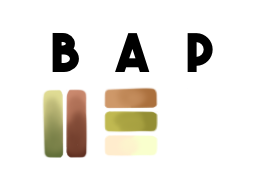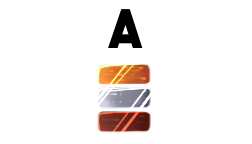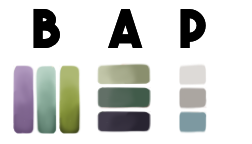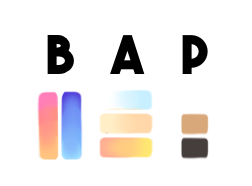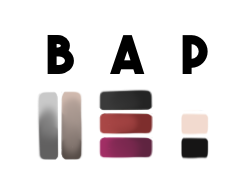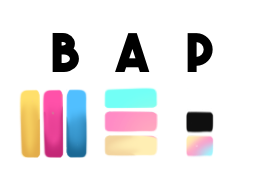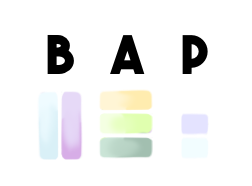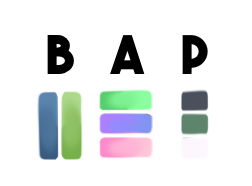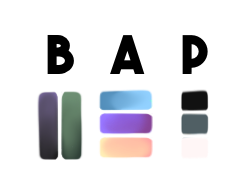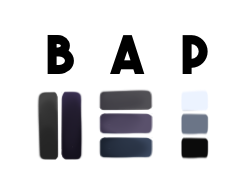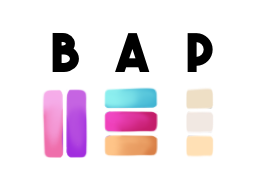Traits
Telekinetic Charge (Very Rare)
Telekinetic Charge Buff:
40% Chance of obtaining a Biotech Bag from any quest.
"The ability to move objects with one's mind could be considered a theoretical flex."
How to use in a quest:
Artwork Suggestions:
- Showing them being able to levitate random items, like spoons.
- Having them lift a hat off of someone's head and put it on their pet.
- Having them have jewels follow them whilst running away from a house they stole them from.
Writing Suggestions:
- Mentioning that they lifted an object without even having to touch it.
- Writing how they could pull a cup of coffee over to their place in the bar without someone having to make it or hand it to them.
- Showing another character that they can lift something they were struggling to hold with their mind.
Aquatic Heritage (Very Rare)
5% chance of the Aqua-Based Tail trait being passed in breedings.
+5 chance of the Aqua-Based Tail trait being passed in breeding if either parent already has it.
Dromedairy Aquatic Heritage Buff:
15% chance of offspring obtaining the Depth Gene
+15 chance of Depth Gene being passed on if either the parents have the gene.
"There are rumours that those with the power of water come from an ancient underwater civilization..."
Neon Gene (Very Rare)
This trait grants the Dromedairy the Neon colour palette.
In breedings, this can be passed down as either a dominant or recessive gene.
All accent markings from this palette glow.
The piebald from this palette sparkles.
If a dromedairy has this gene as recessive, for offspring to obtain it the other parent must either have this gene as a dominant gene, or a recessive gene.
Cannot pass to offspring as a dominant gene if only one parent carries the recessive gene and has a 50% chance of becoming dominant if both parents have it as recessive if rolled in a breeding.
Luster Dust Gene (Very Rare)
This trait grants the Dromedairy the Luster Dust colour pallette that works differently than most colouration traits.
In breedings, this can be passed down as either a dominant or recessive gene.
The markings from this gene are always metallic and glow on the Dromas body.
If a dromedairy has this gene as recessive, for offspring to obtain it the other parent must either have this gene as a dominant gene, or a recessive gene.
Cannot pass to offspring as a dominant gene if only one parent carries the recessive gene and has a 50% chance of becoming dominant if both parents have it as recessive if rolled in a breeding.
Those who have this colouration have their Piebald colour palette on their current dominant colouration replaced with the colours of this gene.
Suncatcher Gene (Very Rare)
This trait grants the Dromedairy the Suncatcher colour pallette.
This gene replaces the base colours on a Dromedairy's gene pallette with the ones present.
This gene also replaces the Accent colours with those present on this Pallette. All accent colours Glow and Sparkle brightly.
If a dromedairy has this gene as recessive, in order for offspring to obtain it the other parent must either have this gene as a dominant gene, or a recessive gene.
Cannot pass to offspring as a dominant gene if only one parent carries the recessive gene and has a 75% chance of becoming dominant if both parents have it as recessive if rolled in a breeding.
Tea Gene (Very Rare)
This trait grants the Dromedairy the Tea colour pallette.
In breedings, this can be passed down as either a dominant or recessive gene.
With this gene, the Piebald colour does not stay in the same place, moving around the droma like milk would in an unstirred tea. Each time this Droma is drawn, the piebald can be completely different.
If a dromedairy has this gene as recessive, in order for offspring to obtain it the other parent must either have this gene as a dominant gene, or a recessive gene.
Cannot pass to offspring as a dominant gene if only one parent carries the recessive gene and has a 50% chance of becoming dominant if both parents have it as recessive if rolled in a breeding.
Royal Gene (Very Rare)
This trait grants the Dromedairy the Royal colour pallette that only affects Accent colours.
In breedings, this can be passed down as either a dominant or recessive gene.
The markings from this gene are always metallic and drip off of the Dromas body.
If a dromedairy has this gene as recessive, in order for offspring to obtain it the other parent must either have this gene as a dominant gene, or a recessive gene.
Cannot pass to offspring as a dominant gene if only one parent carries the recessive gene and has a 50% chance of becoming dominant if both parents have it as recessive if rolled in a breeding.
Ghoul Gene (Very Rare)
This trait grants the Dromedairy the Ghoul colour pallette.
In breedings, this can be passed down as either a dominant or recessive gene.
Dromedairy with this gene have a gentle Fullbody Glow.
If a dromedairy has this gene as recessive, in order for offspring to obtain it the other parent must either have this gene as a dominant gene, or a recessive gene.
Cannot pass to offspring as a dominant gene if only one parent carries the recessive gene and has a 50% chance of becoming dominant if both parents have it as recessive if rolled in a breeding.
Fungi Gene (Very Rare)
This trait grants the Dromedairy the Fungi colour pallette.
All accent colours glow and sparkle.
In breedings, this can be passed down as either a dominant or recessive gene.
If a dromedairy has this gene as recessive, in order for offspring to obtain it the other parent must either have this gene as a dominant gene, or a recessive gene.
Cannot pass to offspring as a dominant gene if only one parent carries the recessive gene and has a 25% chance of becoming dominant if both parents have it as recessive if rolled in a breeding.
Earlybird Gene (Very Rare)
This trait grants the Dromedairy the Earlybird colour pallette.
In breedings, this can be passed down as either a dominant or recessive gene.
If a dromedairy has this gene as recessive, in order for offspring to obtain it the other parent must either have this gene as a dominant gene, or a recessive gene.
Cannot pass to offspring as a dominant gene if only one parent carries the recessive gene and has a 25% chance of becoming dominant if both parents have it as recessive if rolled in a breeding.
Stone Gene (Very Rare)
This trait grants the Dromedairy the Stone colour pallette.
In breedings, this can be passed down as either a dominant or recessive gene.
If a dromedairy has this gene as recessive, in order for offspring to obtain it the other parent must either have this gene as a dominant gene, or a recessive gene.
Cannot pass to offspring as a dominant gene if only one parent carries the recessive gene and has a 25% chance of becoming dominant if both parents have it as recessive if rolled in a breeding.
Sweet Gene (Very Rare)
This trait grants the Dromedairy the Sweet colour pallette.
In breedings, this can be passed down as either a dominant or recessive gene.
If a dromedairy has this gene as recessive, in order for offspring to obtain it the other parent must either have this gene as a dominant gene, or a recessive gene.
Cannot pass to offspring as a dominant gene if only one parent carries the recessive gene and has a 75% chance of becoming dominant if both parents have it as recessive if rolled in a breeding.
Clear Gene (Very Rare)
This trait grants the Dromedairy the Clear colour pallette.
In breedings, this can be passed down as either a dominant or recessive gene.
If a dromedairy has this gene as recessive, in order for offspring to obtain it the other parent must either have this gene as a dominant gene, or a recessive gene.
Cannot pass to offspring as a dominant gene if only one parent carries the recessive gene and has a 25% chance of becoming dominant if both parents have it as recessive if rolled in a breeding.
Seaweed Gene (Very Rare)
This trait grants the Dromedairy the Seaweed colour pallette.
In breedings, this can be passed down as either a dominant or recessive gene.
If a dromedairy has this gene as recessive, in order for offspring to obtain it the other parent must either have this gene as a dominant gene, or a recessive gene.
Cannot pass to offspring as a dominant gene if only one parent carries the recessive gene and has a 25% chance of becoming dominant if both parents have it as recessive if rolled in a breeding.
Depth Gene (Very Rare)
This trait grants the Dromedairy the Depth colour pallette.
In breedings, this can be passed down as either a dominant or recessive gene.
If a dromedairy has this gene as recessive, in order for offspring to obtain it the other parent must either have this gene as a dominant gene, or a recessive gene.
Cannot pass to offspring as a dominant gene if only one parent carries the recessive gene and has a 25% chance of becoming dominant if both parents have it as recessive if rolled in a breeding.
Luna Gene (Very Rare)
This trait grants the Dromedairy the Luna colour pallette.
In breedings, this can be passed down as either a dominant or recessive gene.
If a dromedairy has this gene as recessive, in order for offspring to obtain it the other parent must either have this gene as a dominant gene, or a recessive gene.
Cannot pass to offspring as a dominant gene if only one parent carries the recessive gene and has a 25% chance of becoming dominant if both parents have it as recessive if rolled in a breeding.
Drained Gene (Very Rare)
This trait grants the Dromedairy the Drained colour pallette.
In breedings, this can be passed down as either a dominant or recessive gene.
If a dromedairy has this gene as recessive, in order for offspring to obtain it the other parent must either have this gene as a dominant gene, or a recessive gene.
Cannot pass to offspring as a dominant gene if only one parent carries the recessive gene and has a 25% chance of becoming dominant if both parents have it as recessive if rolled in a breeding.
Bubble Gene (Very Rare)
This trait grants the Dromedairy the Bubble colour pallette.
In breedings, this can be passed down as either a dominant or recessive gene.
If a dromedairy has this gene as recessive, in order for offspring to obtain it the other parent must either have this gene as a dominant gene, or a recessive gene.
Cannot pass to offspring as a dominant gene if only one parent carries the recessive gene and has a 25% chance of becoming dominant if both parents have it as recessive if rolled in a breeding.
Sakura Gene (Very Rare)
This trait grants the Dromedairy the Sakura colour pallette.
In breedings, this can be passed down as either a dominant or recessive gene.
If a dromedairy has this gene as recessive, in order for offspring to obtain it the other parent must either have this gene as a dominant gene, or a recessive gene.
Cannot pass to offspring as a dominant gene if only one parent carries the recessive gene and has a 25% chance of becoming dominant if both parents have it as recessive if rolled in a breeding.

